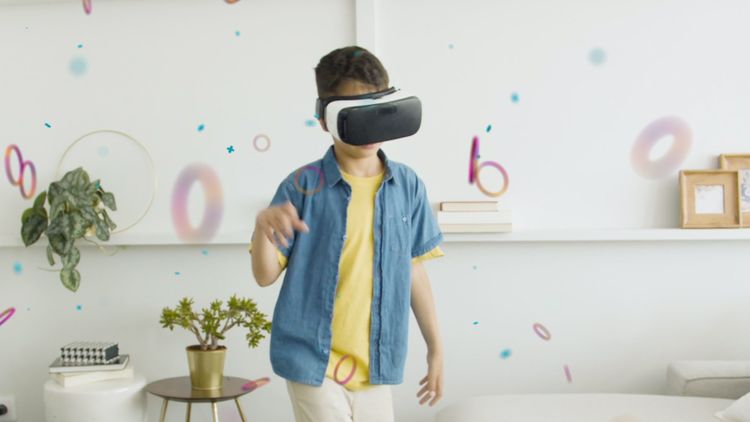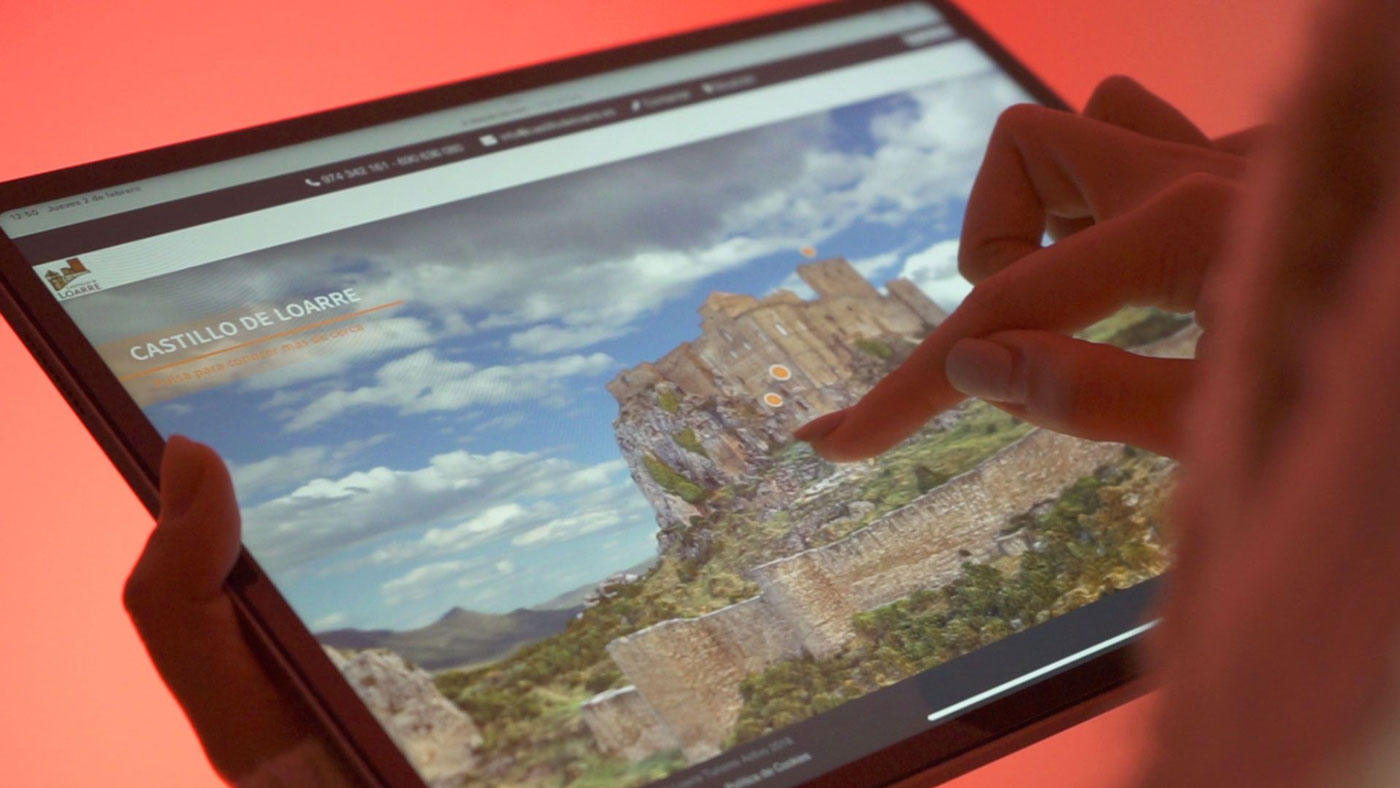Virtual Reality applications in museums
Once we know its definition, how can this technology be applied to the culturethe art and, especially, in the museums? Generally speaking, we can say that the Virtual Reality applied to museums and exhibitions allows changing visitors' perspectives, exploring new ways to develop storytelling of the museum's galleries, exhibitions and tours. Offering new experiences to enjoy art, history and science, both in the museum itself and at home. Here are some of these applications.
▶ Virtual visits to exhibitions
Undoubtedly, the great value of Virtual Reality is its ability to teleport us and take us to a different world. total immersion in new digital spacesThe virtual recreations of the great museums of the world.
Thanks to this, tny user can visit and tour any museum or exhibition around the world with only using Virtual Reality glasses. Enjoying a private and/or self-guided tour with no time limit. Allowing no only generate engagement and end to convince users to discover the museum in person, but also to give the possibility for people with reduced mobility or unable to travel to the museum to enjoy the art on display.
Thus, Virtual Reality applied to museums makes it possible to bring culture closer to all people regardless of their geographical location or cognition. By making the exhibitions are much more accessible.
In addition, thanks to this technology, visitors can continue to enjoy the exhibitions even though the physical collection has ended. Allowing the museum to preserve the exhibition as it was, in addition to providing the museum with more experiences and content beyond the limits of its physical space.
▶ Historical recreations
The Virtual Reality allows museum curators to contextualizing objects and works, showing their true dimension or their appearance in the pastor even recreating the cultural and social environment in which the artwork was created. Revolutionizing the way visitors relate to art and history.
Thus, a history museum could transport visitors to the past or a natural science museum could transform its exhibition rooms into real natural ecosystems to see the fauna and flora of the place. Allowing visitors to discover the museum's contents from a different perspective. new perspective and, above all, in first person. By recreating historical, cultural and artistic environments, visitors are immersed and enjoy them in great detail, living a much more enriching experience.
▶ Interactive experiences with works of art.
Virtual Reality allows visitors to feel as if they were stepping inside the play. Actively interacting with the exhibits by being able to explore the environment in 360 degrees, manipulating virtual objects, discovering the works from new perspectives, getting closer to see in great detail all the textures and brushstrokes and even obtaining additional information through interactive elements.
This interactivity fosters greater engagement and participation.radically changing the idea of museums as places where one only observes and does not interact.
A very important element that Virtual Reality incorporates into museums is the gamification. Thus, museums and exhibitions can developing historical games, puzzles, escape rooms and creating blank rooms where visitors can create their own virtual works of art.
▶ Immersive educational experiences
One of the most relevant applications of the Virtual Reality (VR) in museums is its ability to to create immersive educational experiences of high value to users. They can access additional personalized information, view interactive demonstrations and participate in educational activities that enhance their understanding and experience within the museum. Virtual Reality helps visitors to feel connected to the exhibition, to the artist and to the work.
With regard to the educationVirtual Reality in museums is a great advantage for students from all over the world, as they can enjoy and learn from the experience. studying the most amazing pieces of world history with a accessibility and ease never seen before.
You may be interested in our post→ Virtual Reality in education: features and benefits.
▶ New virtual art
Artists themselves are experimenting with Virtual Reality to produce amazing new works. This technology offers them a new means of artistic expressiondesigning original environments to create multisensory virtual experiences. Where not only new worlds are generated, but also visitors become active participants of the art installation, ceasing to be mere spectators.
On the other hand, Virtual Reality can play a very important role in the conservation and preservation of cultural heritage. By virtualizing objects and settings, a three-dimensional copy of every work and detail in the museum can be created. Making it more accessible to future generations by preserving its original image in a virtual version as a guide for future restorations.
Examples of Virtual Reality (VR) applications in museums
By developing original and novel Virtual Reality experiences, museums, galleries, and cultural events demonstrate their desire to innovate and reach a wider audience. A fact that also leads to increase the number of visitors.
Although it is a technology that will gradually be incorporated into museums around the world, these are the pioneers that already have this type of technology today.
- For example, the National Museum of Natural History in Washington, D.C. and the Smithsonian American Art Museum include among its activities virtual tours of some of its most important galleries. They offer panoramic and three-dimensional scenes of both permanent and temporary exhibitions, with additional information, videos and other multimedia content.
- On the other hand, the British Museum has developed the Boulevard App for the Oculus/Meta Quest glasses, to experience in Virtual Reality the complete tour of its galleries and enjoy a unique, private visit and being able to get close to all the works on display.
- Examples also include The VR Museum of Fine Arta museum that is not a real museum. In this platform - called Vive - some of the most famous works of art in history are collected in three dimensions in a totally immersive and virtual space.
- All with a great level of detail and with the necessary information to enjoy these great works of humanity gathered in the same space. Another museum of these characteristics is The Kremer Museumis more of a virtual collecting gallery specializing in Flemish works of the Golden Age that seeks to share them with as many people as possible.
- In Spain we find the Loarre Castle as one of the most recent examples of moving into the virtual world. With the experience Loarre XRThe Romanesque castle makes the leap to Virtual Reality and the 3D web to bring its heritage and history of difficult access to all people with limitations.
- At the European level, we find the virtualization of European culture Virtual For Youth Skillswhere different museums in the European Union (Museo Goya, Stara Lubovna Castle, Comune di Volpedo) have been virtualized to bring together on the same 3D platform access to all their history, works and cultural, historical and artistic value.
What will the future of Virtual Reality in museums look like?
The Virtual Reality (VR) has demonstrated its ability to transform the visitor experience in museums, offering immersive, interactive, accessible and attractive experiences for all audiences. As we move into the future, it will become increasingly common to find this technology among art galleries and art rooms.
One of the key directions in the evolution of Virtual Reality in museums is the continuous improvement of the technology, its level of detail and especially cost reduction. VR devices will become increasingly affordable and accessible, aiding in the adoption of this innovative technology.
In addition, we expect a further development in the personalization and interactivity of VR experiences in museums. The same activity can be customized according to the individual preferences of the visitors, adapting the content to their interests, questions and concerns, thanks, above all, to the Virtual Reality and the Artificial Intelligence.
On the other hand, the experience can also be developed in the following areas multi-user formatadding the social part to the experience to share the activity in the same virtual space with several visitors at the same time.
➔ Find out what the expectations of virtual reality are for the future
The future of Virtual Reality in museums poses new and exciting challenges to expand art, culture, history and science through new immersive technologies.
At Imasconoour team of engineers, designers and creatives has been working with us for many years. more than 12 years developing immersive experiences through our Virtual Reality servicesDo you need a Virtual Reality project for your museum, gallery or showroom?Contact with us and we will take your museum into the new virtual universe!




